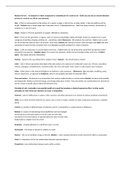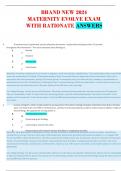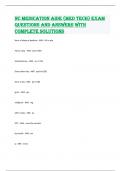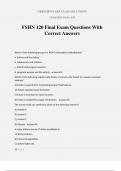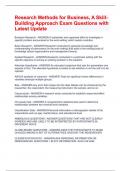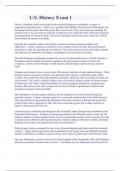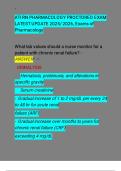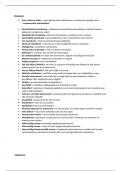Element (of art )- An element is a basic component or essential part of a work of art. Artist may use one or several elements
at time in a work of art. All art uses elements.
Line- A line is a moving point on the surface of a canvas, a paper, a slab of clay, or other media. A line has width as well as
length. Contour uses a simple single line to describe a form. Compositional lines – lines that imply structure, movement, or
emotion in 2-d and 3-d work.
Shape - Shape is a 2D area, geometric or organic, defined by a boundary.
Form - Forms are 3D, geometric or organic, open or closed, having height, width and depth. Artist try to imply form in some
categories of painting, drawing, printing, etc., sometimes called chiaroscuro. All sculpture has real form. Form is also a word
we use to describe what we see in an artwork. Forms have volume (the amount of space a form occupies) and mass (the solid
expression of space the form occupies) such as an Egyptian pyramid compared to a piece of jewelry.
Space - is the area between or around shapes and forms. Implied space can be achieved by using linear perspective and/or
atmospheric perspective. Negative space- the unused area between, within and surrounding shapes and forms. Positive
space- the shapes and forms themselves.
Texture - Texture is the way things feel or appear to feel. Impasto – the actual texture of paint.
Color - Color is what is perceived when light strikes the surface of an object and is reflected in your eye. Primary, secondary,
tertiary, analogous, complimentary, monochromatic, hue, tint, and shade. Color, warm or cold, impacts your emotions.
Value - Value refers to the amount of lightness or darkness a color possesses. Chiaroscuro, light and darks, modeling, using
value to imply form, as opposed to tenebrism, which is strong lights and darks for dramatic effect.
Time and motion - An element in a composition that involves implied motion or actual motion (kinetic) functions both spatially
and temporally. Motion is a kind of change, and change takes place in time. Time and motion are considerations for all work yet
can be a focus in specific pieces where this element is key.
Principle (of art): A principle is an essential quality of a work that produces a desired expressive effect. In other words,
principles are how artists use elements to create a composition.
Contrast - refers to differences in values, colors, textures, and other elements in an artwork to achieve emphasis and interest.
Unity occurs when all of the elements of a piece, such as color or shape, combine to make a balanced, harmonious, complete
whole.
Variety is a number of different types of elements used in a composition to create interest or difference.
Balance is a means of maintaining visual equilibrium and visual weight.
Asymmetrical or Informal balance is not the same on both sides.
Symmetrical or Formal balance is approximately the same on both sides.
Radial balance radiates from the center.
Emphasis – drawing attention to a particular area in a work.
Focal point – the center of interest or activity in a work.
Pattern – the use of repetition using an element. Rhythm – when repeated elements create movement within a composition.
Scale is a comparison of the size relationships between separate objects.
Proportion is size relationships between parts within a whole.
at time in a work of art. All art uses elements.
Line- A line is a moving point on the surface of a canvas, a paper, a slab of clay, or other media. A line has width as well as
length. Contour uses a simple single line to describe a form. Compositional lines – lines that imply structure, movement, or
emotion in 2-d and 3-d work.
Shape - Shape is a 2D area, geometric or organic, defined by a boundary.
Form - Forms are 3D, geometric or organic, open or closed, having height, width and depth. Artist try to imply form in some
categories of painting, drawing, printing, etc., sometimes called chiaroscuro. All sculpture has real form. Form is also a word
we use to describe what we see in an artwork. Forms have volume (the amount of space a form occupies) and mass (the solid
expression of space the form occupies) such as an Egyptian pyramid compared to a piece of jewelry.
Space - is the area between or around shapes and forms. Implied space can be achieved by using linear perspective and/or
atmospheric perspective. Negative space- the unused area between, within and surrounding shapes and forms. Positive
space- the shapes and forms themselves.
Texture - Texture is the way things feel or appear to feel. Impasto – the actual texture of paint.
Color - Color is what is perceived when light strikes the surface of an object and is reflected in your eye. Primary, secondary,
tertiary, analogous, complimentary, monochromatic, hue, tint, and shade. Color, warm or cold, impacts your emotions.
Value - Value refers to the amount of lightness or darkness a color possesses. Chiaroscuro, light and darks, modeling, using
value to imply form, as opposed to tenebrism, which is strong lights and darks for dramatic effect.
Time and motion - An element in a composition that involves implied motion or actual motion (kinetic) functions both spatially
and temporally. Motion is a kind of change, and change takes place in time. Time and motion are considerations for all work yet
can be a focus in specific pieces where this element is key.
Principle (of art): A principle is an essential quality of a work that produces a desired expressive effect. In other words,
principles are how artists use elements to create a composition.
Contrast - refers to differences in values, colors, textures, and other elements in an artwork to achieve emphasis and interest.
Unity occurs when all of the elements of a piece, such as color or shape, combine to make a balanced, harmonious, complete
whole.
Variety is a number of different types of elements used in a composition to create interest or difference.
Balance is a means of maintaining visual equilibrium and visual weight.
Asymmetrical or Informal balance is not the same on both sides.
Symmetrical or Formal balance is approximately the same on both sides.
Radial balance radiates from the center.
Emphasis – drawing attention to a particular area in a work.
Focal point – the center of interest or activity in a work.
Pattern – the use of repetition using an element. Rhythm – when repeated elements create movement within a composition.
Scale is a comparison of the size relationships between separate objects.
Proportion is size relationships between parts within a whole.

